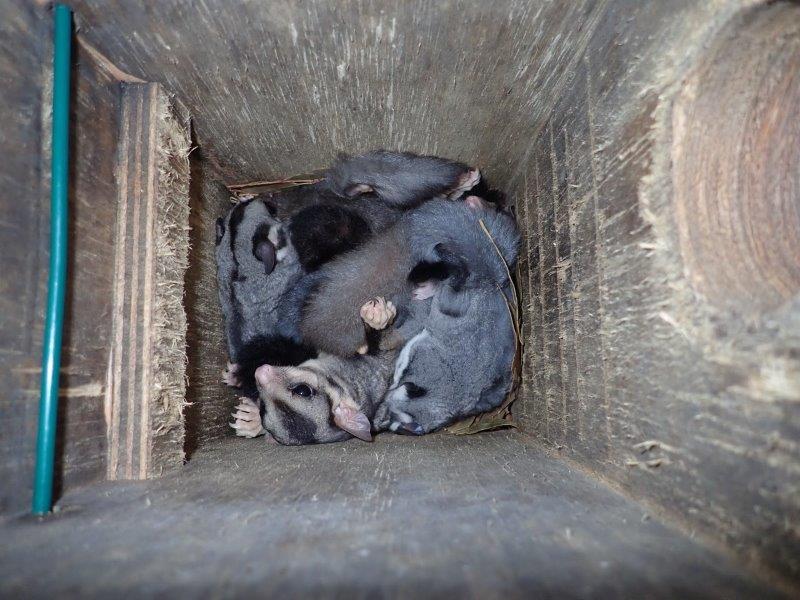
Community Update
COOLUM AND NORTH SHORE COAST CARE
Landcare Australia grant provides nest boxes
THANKS to recent funding from Landcare Australia, there are now 76 nest boxes for hollow-dwelling fauna in our bushland and conservation parks at eight locations from Stumers Creek to Mudjimba.
Nest boxes for hollow-dependent fauna species were first installed by Coolum and North Shore Coast Care in 2000 to replicate artificial hollows and to provide a safe place for local wildlife in response to the loss of old-growth trees in the region. These sites are located alongside tidal rivers, dunes, inland native vegetation and the ever-increasing urbanised landscape.
Gliders have the highest representation of mammals across the sites at 27 per cent, including the recently installed boxes at Yungar Street.
Regular audits, eight in total, over two decades, have identified areas of highest occupancy and usage and enabled box installation to be targeted to species and specific locations.
Over 25 years, not surprisingly, the original boxes deteriorated and have slowly been replaced as funding has permitted. The new ‘Cyplas’ boxes made from food grade recycled plastic and cypress pine have replaced most of the original boxes and are expected to last for up to up to 40 years.
At the last nest box audit in 2021, also funded by Landcare Australia, there were only 44 habitable nest boxes. Landcare Australia also generously funded box replacement, which then resulted in 51 boxes in situ over the last four years.
A new round of funding from Landcare Australia allowed the 51 boxes to be re-audited again this year, with additional nest boxes being installed.
The results of the audit across the 51 boxes that were still suitable showed an overall habitation rate of 71 per cent, which included Gliders, Possums, Microbats, bird species, Native Bees, a Lace Monitor and several boxes with an undetermined native animal.
Key findings from the nest box audit
● Possums were identified as 20% of the representation of native animals. The Common Brushtail Possum was the most sighted.
● Native Bees were sighted in two boxes at Yaroomba Bushland Park and Springfield Avenue.
● The Lace Monitor was occupying a box at Yinneburra Bushland Park.
● Evidence of European bees was found in two boxes and removed.
● Bird species were noted across the sites utilising three boxes, with Owlet-nightjars identified as using two boxes. This provides a habitation rate of 6%.
● One Double Chamber Microbat nest box showed evidence of use by Microbats, accounting for just 2% of native animals across the eight sites.
Looking to the future
Sunshine Coast Council has recently commenced a citizen science nest box monitoring project across the region. The Council project aims to gain accurate and current information to determine how effective nest boxes are across the Sunshine Coast region.
The Council project now has access to 25 years of Coast Care nest box audit data, which will add depth to the project and hopefully inform decision makers about the fauna species in Council reserves.
Thirty-five people attended our subsequent workshop, where Dominique and Alan Franks from Hollow Log Homes and Nittya Simard from Council shared their extensive knowledge. Attendees were lucky enough to spot a sleeping possum in one of the recently audited boxes on the walk in the Maroochy Conservation Park.
